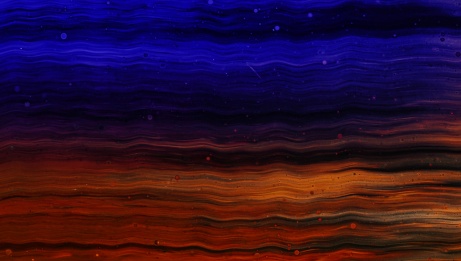“The National Arts Centre is located on the unceded, unsurrendered homeland of the Algonquin Anishinabeg.”
These are profound and meaningful words.
They express the reality that – from time immemorial – the land where the NAC is located at the confluence of the Kitchissippi (Ottawa), Pasapkedjiwanong (Rideau) and Tenàgàdino (Gatineau) rivers near the Akikodjiwan waterfalls, is a place where Indigenous people would gather in the summer to feast, exchange goods, create arts and crafts, and dance in pow-wows.
This has always been a place of artistic expression.
For years, a land acknowledgement has been spoken at the NAC, often just before the curtain rises on a music, dance or theatre performance.
And now, a visual land acknowledgement will be displayed permanently in one of the most prominent spaces at the NAC, the Canal Foyer, where hundreds of thousands of visitors come every year.
It will serve to welcome from the Algonquin People to visitors of the National Arts Centre.
Heartbeat of Mother Earth
The mixed media artwork called Heartbeat of Mother Earth was created by Algonquin artist Emily Brascoupé-Hoefler. It was unveiled on May 16, 2022, during a special ceremony in the presence of elders and leaders from the Host Anishinabeg community and broadcast live on Facebook.
The piece encompasses aspects of Algonquin culture and tradition to welcome and extend teachings about Algonquin history and the geography of this region.
Ms. Brascoupé-Hoefler created the work based on the teachings of Elders Claudette Commanda, Annie Smith Saint-Georges, Albert Dumont and Pinock Smith, as well as her own family’s history and stories. The work was commissioned by the NAC following a call to Algonquin artists in all 11 communities.
“I wanted to create a welcoming work of art that highlighted this region, landmarks and traditions of the Algonquin People,” said Emily Brascoupé-Hoefler. “The piece has the night sky with our star teachings and stories, the sacred Akikodjiwan waterfalls, the forest – the birch trees that give us baskets, canoes, bitings, and teachings – and a reflection of ourselves including everyone in the circle.”
She adds: “As an artist and as a First Nations woman, seeing Indigenous representation growing in the public space, like at the National Art Centre, has been inspiring and I am truly humbled to have my work and voice join the conversation.”
About the Artist
Emily Brascoupé-Hoefler is an Algonquin Anishinabe from the community of Kitigan Zibi. Her works focus on community-based public art with a vision to promoting Algonquin culture and artists. Emily’s recent works focus on reclaiming stories through printmaking, photography and integrating First Nations beadwork into natural and common items. She has worked on public art projects such as the Algonquin Canoe sculpture at the Pimisi Light Rail Train Station and others.
“Growing up in Ottawa, my family would often come to performances at the NAC,” said Emily. “I loved singing and dreamed of being a performer on the stage. My artist pursuits took me in another direction but now I feel like that dream is coming true. As an artist, I am being represented on another type of stage with this visual land acknowledgement.”
The NAC to Algonquins: “This is your home”
“Not only is the NAC home to Canada’s artists, we strive to make it the home of all Indigenous artists” said Christopher Deacon, President and CEO of the NAC. “Algonquin artists in particular – because they represent the Host Nation – play a leading role in the sharing of Anishinaabe culture and traditions. This permanent visual land acknowledgement is a clear message to all our Algonquin friends that the NAC is your home.”















